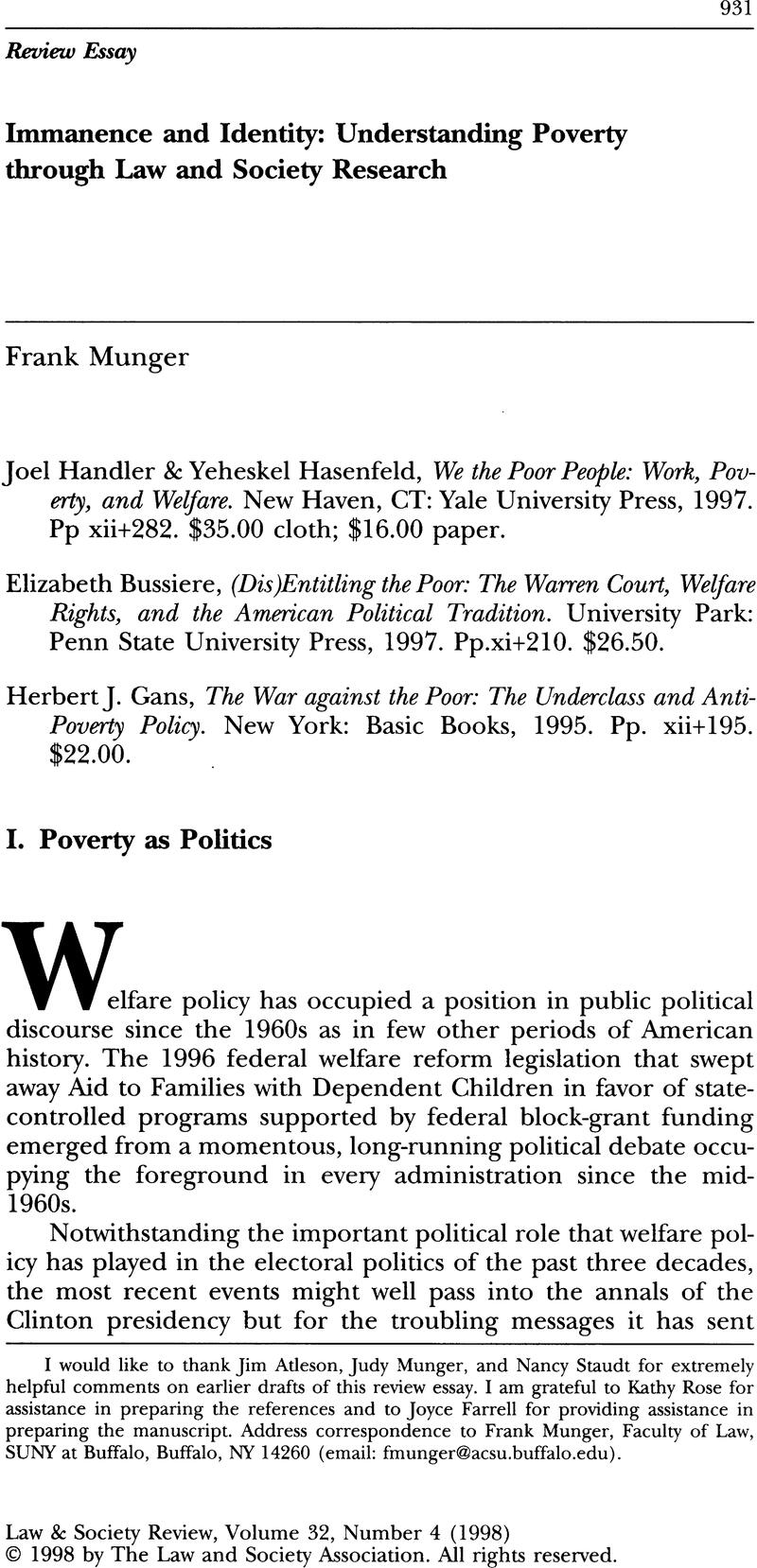Article contents
Immanence and Identity: Understanding Poverty through Law and Society Research
Review products
Published online by Cambridge University Press: 02 April 2024
Abstract

- Type
- Review Essay
- Information
- Copyright
- Copyright © 1998 by The Law and Society Association
Footnotes
I would like to thank Jim Atleson, Judy Munger, and Nancy Staudt for extremely helpful comments on earlier drafts of this review essay. I am grateful to Kathy Rose for assistance in preparing the references and to Joyce Farrell for providing assistance in preparing the manuscript.
References
References
Cases Cited
- 8
- Cited by




